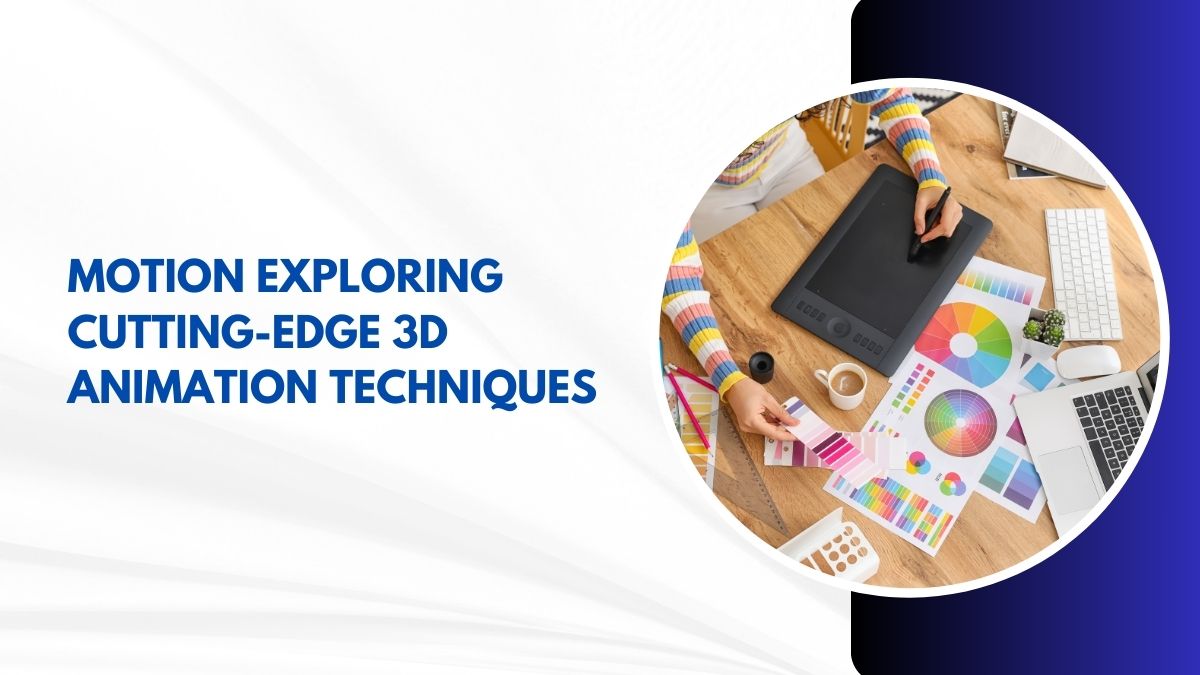
Innovation in Motion Exploring Cutting-Edge 3D Animation Techniques
Are you ready to dive into the mesmerizing world of 3D Animation? Brace yourself for a mind-bending experience as we take you on a journey through the latest and greatest innovations in motion graphics company.
From lifelike characters that seem plucked from our wildest dreams to breathtaking visual effects that transport us to unimaginable realms, this blog post is your ticket to exploring the cutting-edge techniques revolutionizing the realm of 3D Animation.
So fasten your seatbelts and prepare to be blown away by the limitless possibilities awaiting us in this captivating realm where innovation is always in motion!
Traditional vs. Cutting-Edge Techniques
When creating animated content, there are two main approaches: traditional and cutting-edge techniques. While conventional methods have been used for decades and are still widely utilized, the emergence of advanced techniques has revolutionized the animation industry.
In this section, we will delve into the differences between these two approaches and explore why cutting-edge techniques are becoming increasingly popular.
Traditional animation techniques involve hand-drawn or stop-motion animation. This method relies on physical drawings or models photographed and put together frame by frame to create a moving sequence.
This process can be time-consuming and labor-intensive as each frame must be drawn or manipulated individually. However, traditional Animation has a certain charm and appeal that many viewers appreciate due to its handcrafted feel.
Using Motion Capture Technology in 3D Animation
Motion capture technology, also known as mocap, is a revolutionary tool in 3D Animation. It allows animators to capture the movements of real-life actors or objects and translate them into digital animations.
This technique has been around since the 1970s but has significantly evolved, becoming an essential part of modern animation productions.
Motion capture technology involves placing markers on the actor’s body or object and capturing their movements through specialized cameras.
These markers reflect light emitted by infrared sensors, allowing for precise tracking of even subtle movements. The data collected from these markers is then processed by specialized software, translating it into a digital skeleton that can be manipulated and animated in a virtual environment.
Blending Realism and Artistry with AI and Machine Learning
In recent years, advancements in technology have revolutionized the field of Animation. With the rise of artificial intelligence (AI) and machine learning, animators now have access to powerful tools that allow them to create realistic and artistic 3D animations unlike ever before.
One of the most significant developments in this realm is the ability to blend realism and artistry seamlessly using AI and machine learning algorithms. Traditionally, achieving both realism and artistry in Animation was a complex and time-consuming process.
Animators had to meticulously design every movement, texture, and detail by hand, which often resulted in limitations in terms of complexity and quality.
However, with AI-powered solutions like generative adversarial networks (GANs) and deep learning techniques, animators can now generate highly realistic animations that are also visually stunning. These algorithms analyze vast amounts of data on human movement or natural phenomena such as water or fire.
They then use this information to generate lifelike simulations that can be incorporated into 3D animations.
Pushing Boundaries with VR and AR in 3D Animation
Virtual Reality (VR) and Augmented Reality (AR) have been gaining widespread popularity in recent years, revolutionizing how we experience digital content. From gaming to education, these immersive technologies have opened up endless possibilities for creators and users alike.
In 3D Animation company, VR and AR are pushing boundaries and taking storytelling to a whole new level.
VR allows users to enter a completely virtual world where they can interact with objects and characters as if they were real. On the other hand, AR overlays digital content onto our physical surroundings, blending the virtual and real worlds seamlessly.
Both these technologies add depth and interactivity to traditional 3D animation techniques, allowing viewers to be fully immersed in the story.
The Impact on Industries: Film, Gaming, Advertising, etc.
The introduction of 3D Animation has wholly revolutionized the film industry. It has opened up endless possibilities for filmmakers, allowing them to create visually stunning and immersive worlds that were once only possible in our imaginations.
With the advancement of 3D animation techniques, filmmakers can now bring their stories to life with incredible detail and realism. This has led to a significant increase in demand for animated films, as audiences have become captivated by the stunning visuals and engaging storytelling that 3D animation offers.
Moreover, 3D Animation has also provided a cost-effective solution for film studios. With traditional animated films requiring hand-drawn frames, creating a feature-length movie was expensive and time-consuming. However, with 3D Animation, this process has been streamlined, reducing production time and costs significantly.
The Impact on the Gaming Industry:
Similar to the film industry, the impact of 3D Animation on gaming has been immense. The hyper-realistic graphics created through 3D Animation have elevated gaming experiences. Players can now immerse themselves in lifelike virtual environments that were previously unimaginable.
Additionally, 3D Animation in games allows for more complex character designs and movements, making gameplay more engaging and realistic. This has also enabled game developers to create expansive open-world games with intricate details that add depth to the overall experience.
Challenges and Controversies Surrounding New Techniques
In recent years, 3D Animation has seen rapid advancements in technology and techniques. From motion capture to virtual reality, these new tools have allowed animators to create more realistic and immersive animations.
However, these advancements also come with challenges and controversies that must be addressed.
One major challenge facing the use of new techniques in 3D Animation is the learning curve associated with them. Traditional methods of animating, such as hand-drawn or stop-motion Animation, can take years to master, but once learned, they can be applied to any project.
In contrast, newer techniques often require specialized software and equipment that may not be accessible or affordable for all animators. This creates a barrier for many artists who want to experiment with these cutting-edge techniques.




